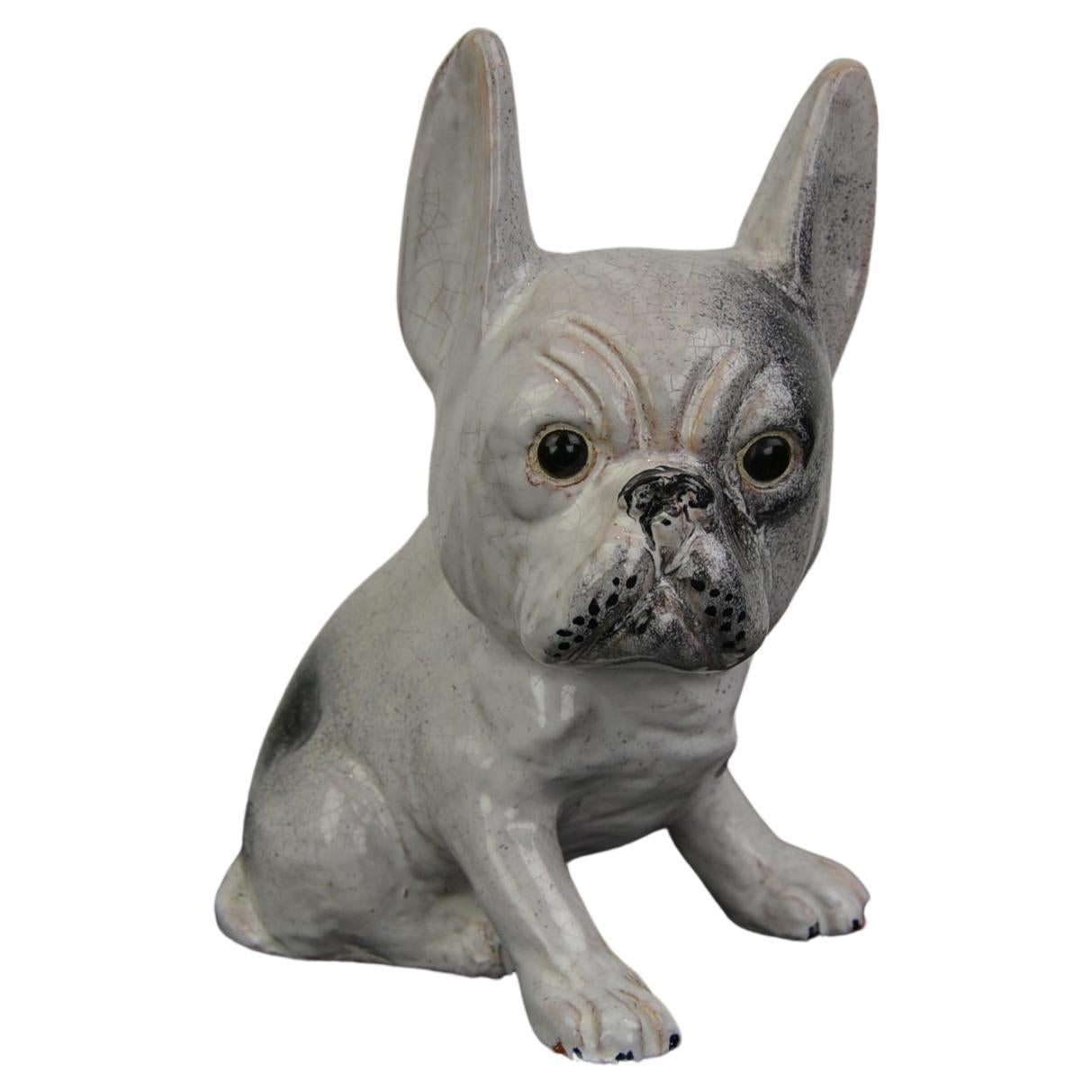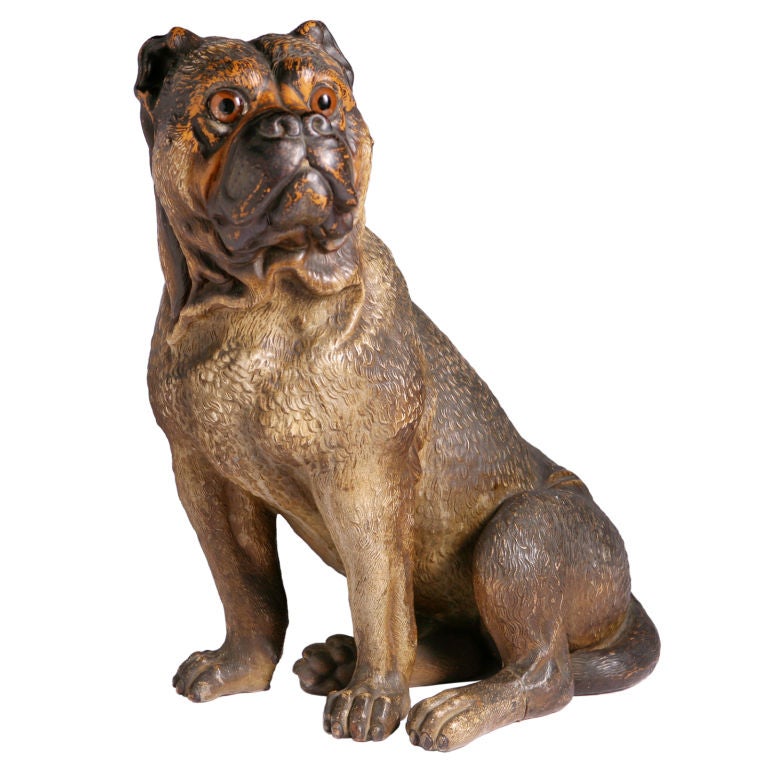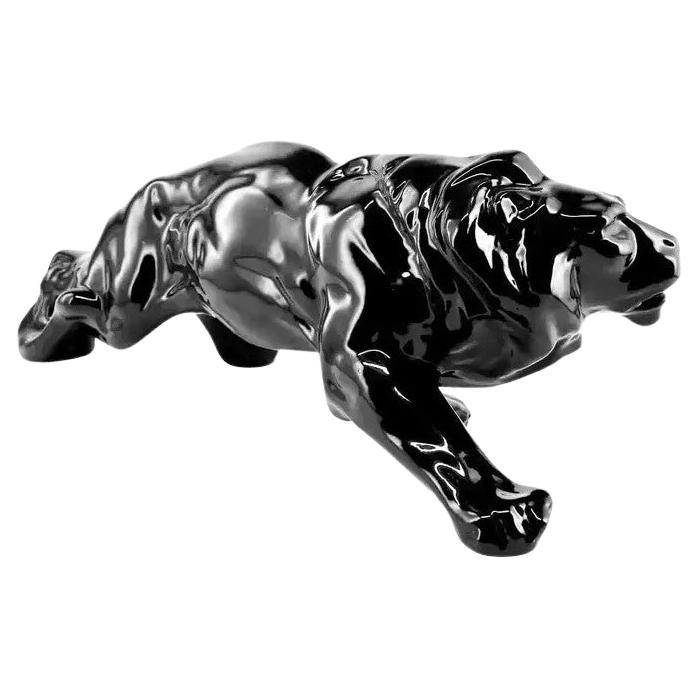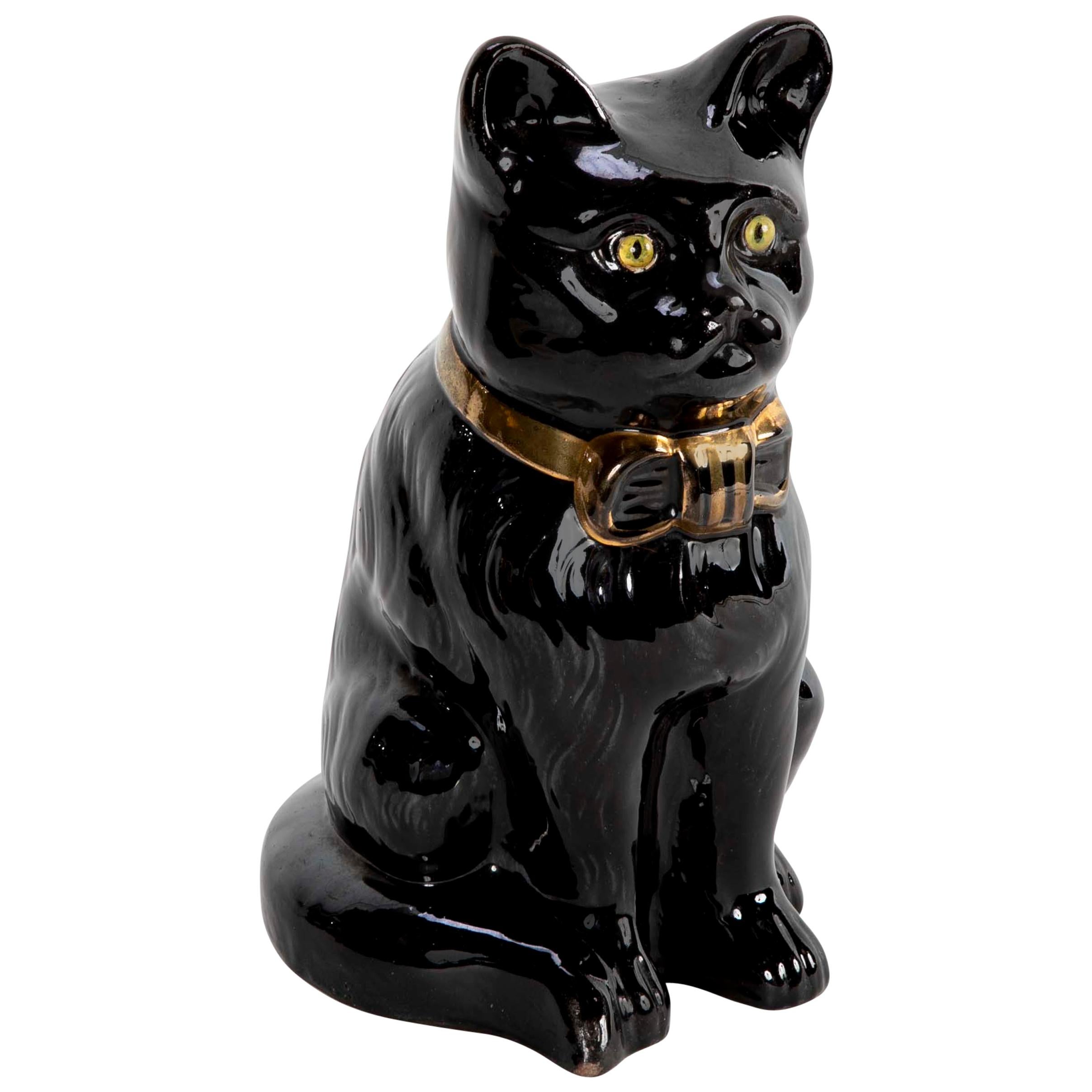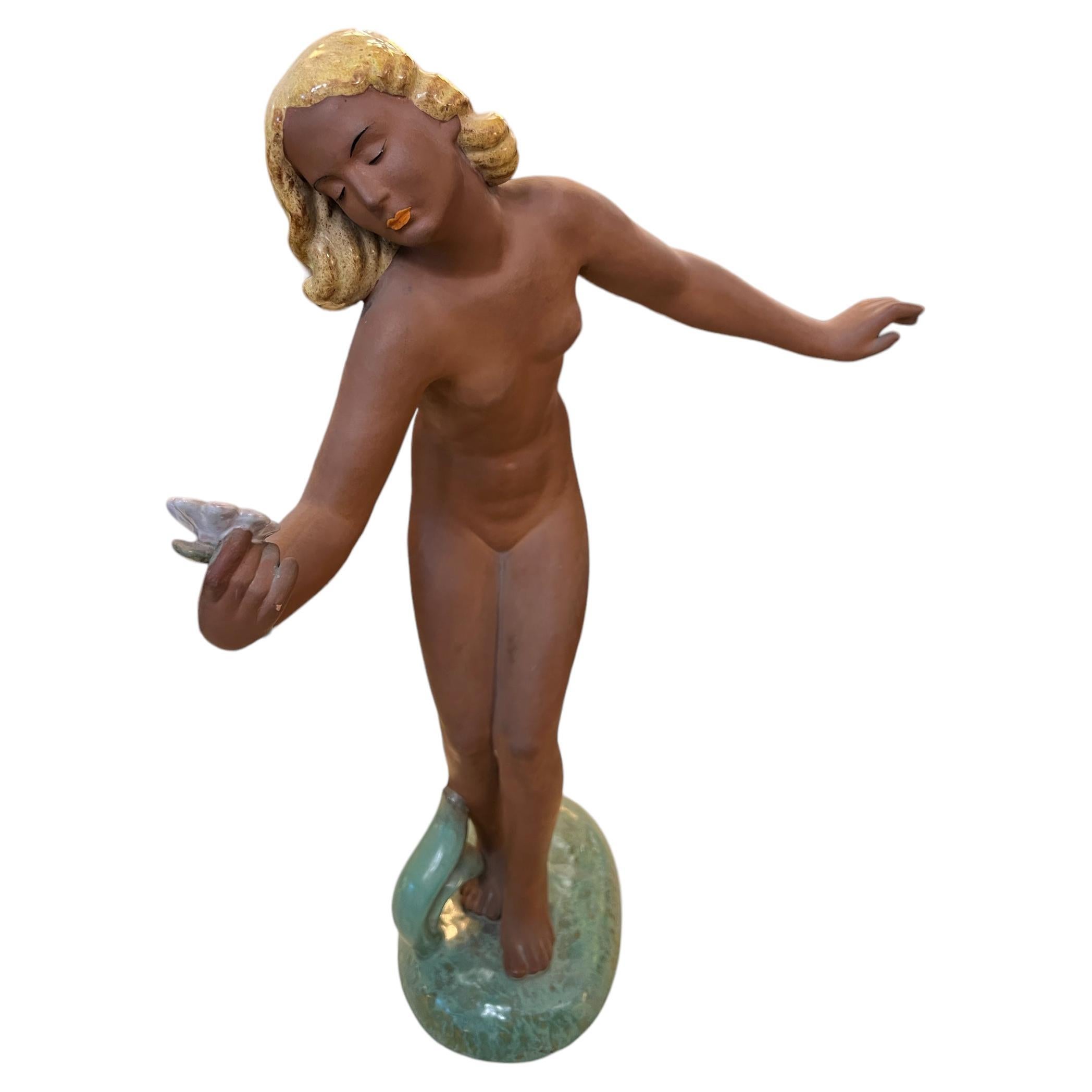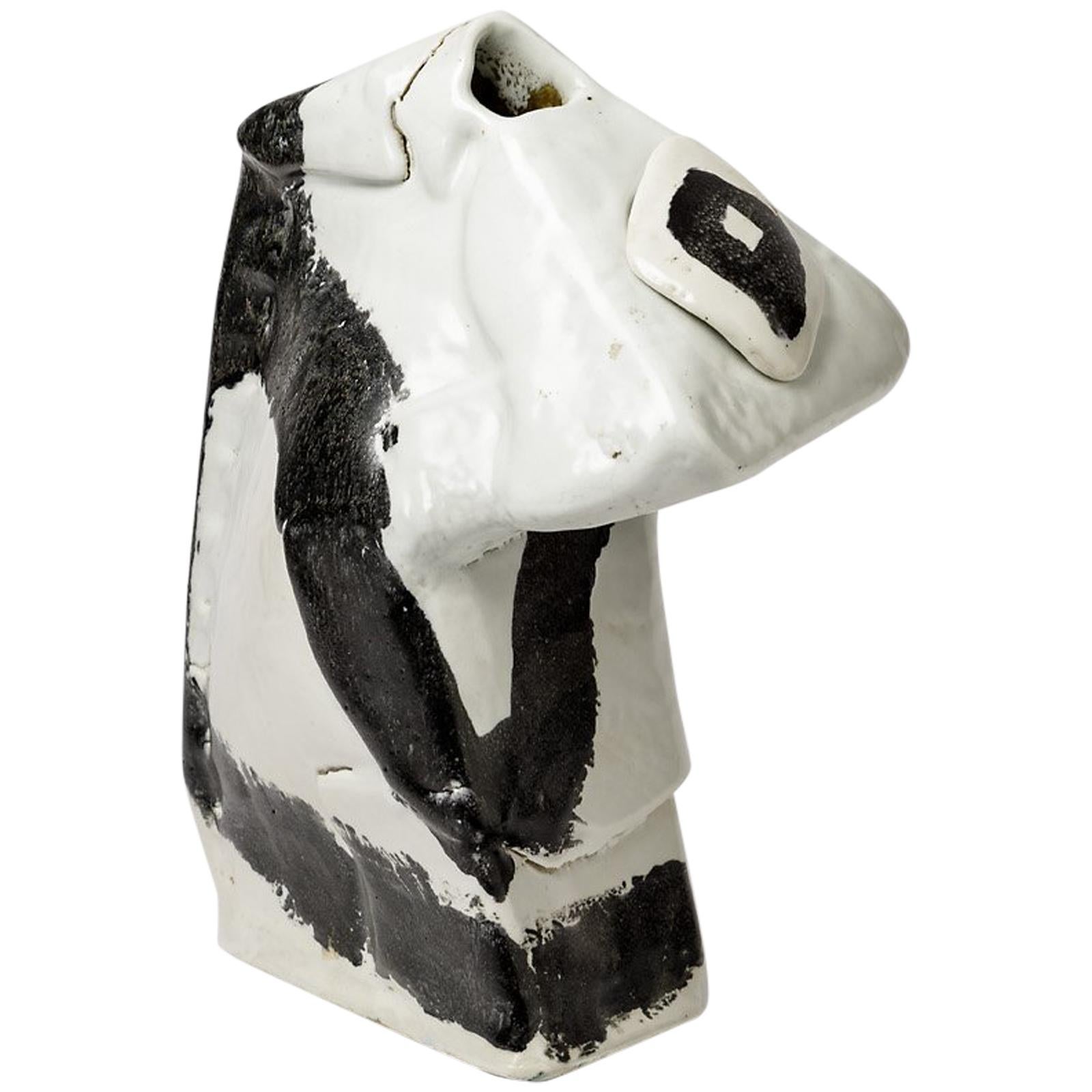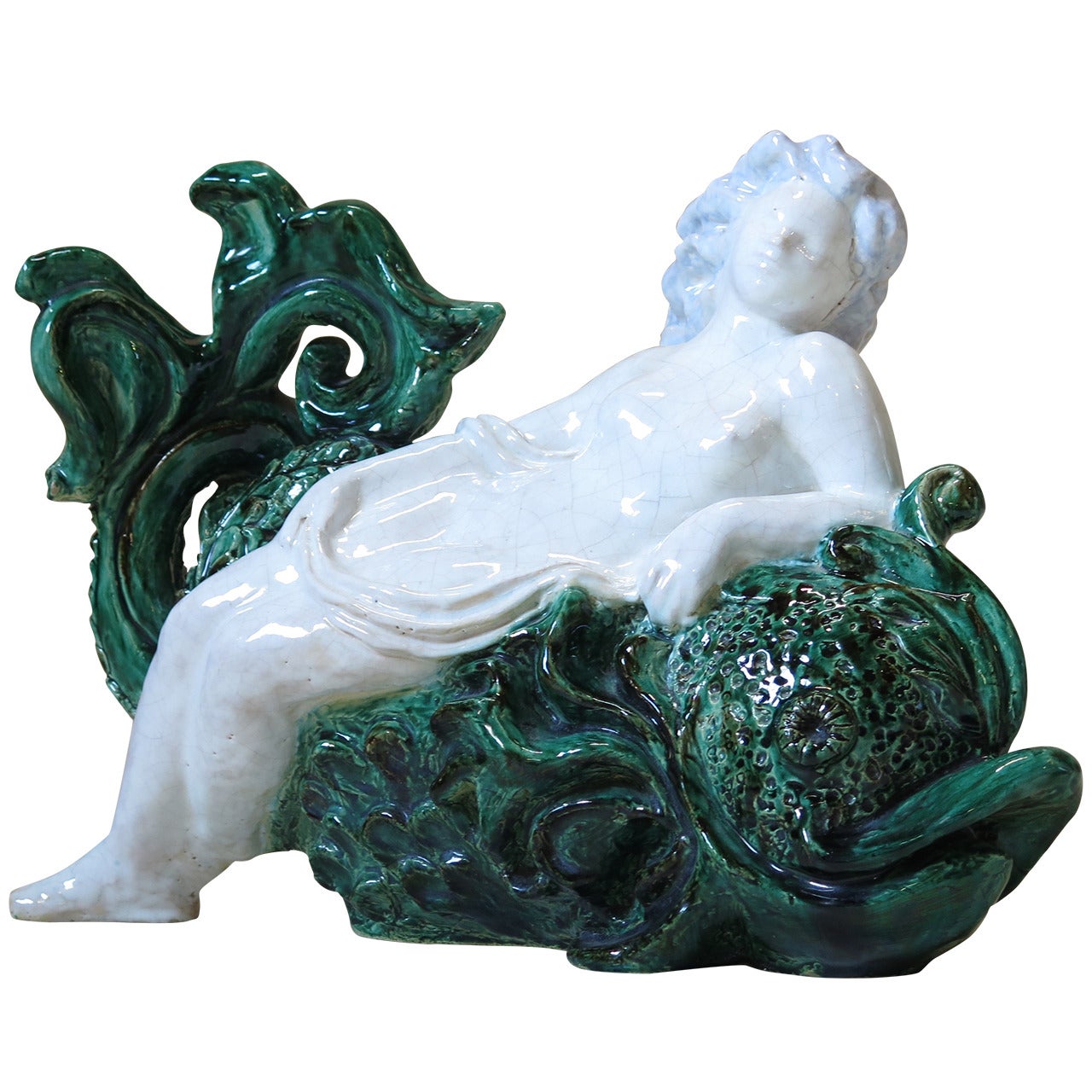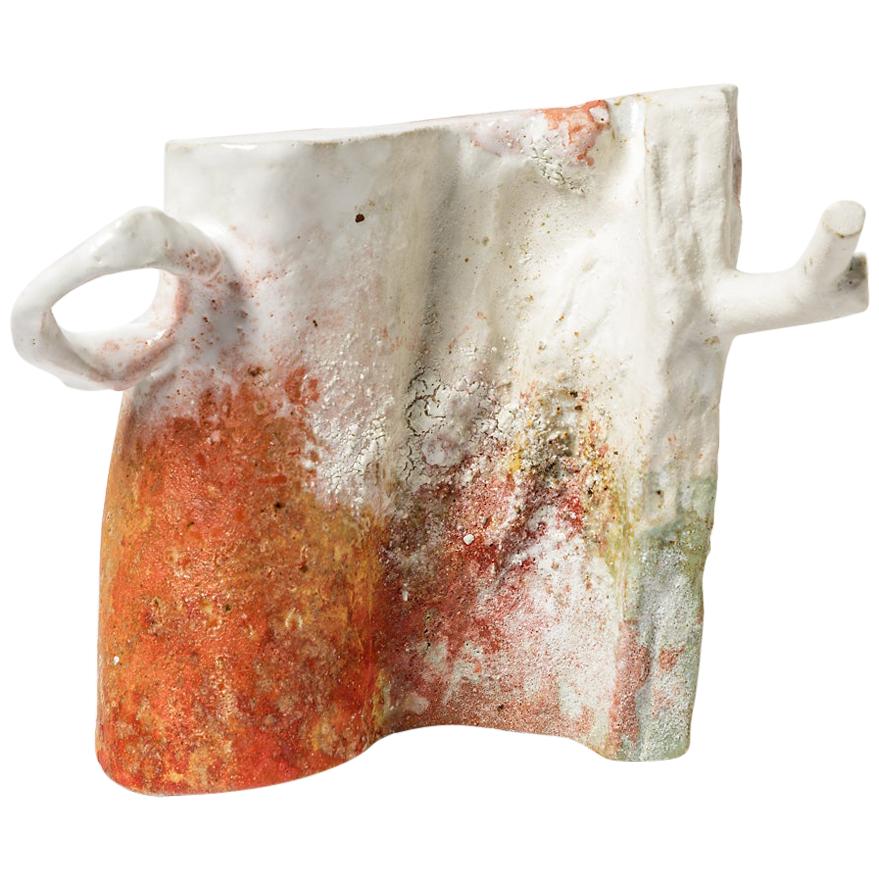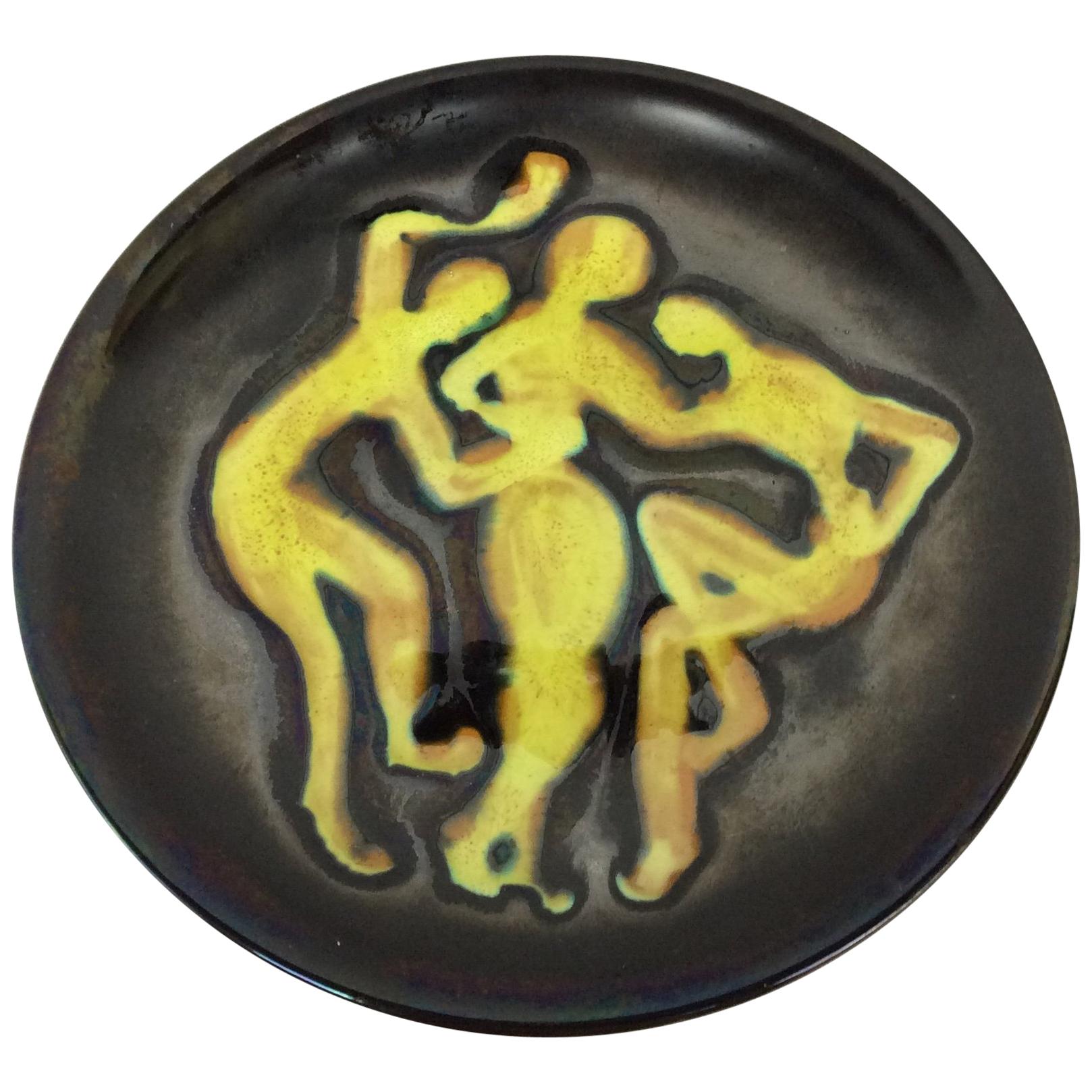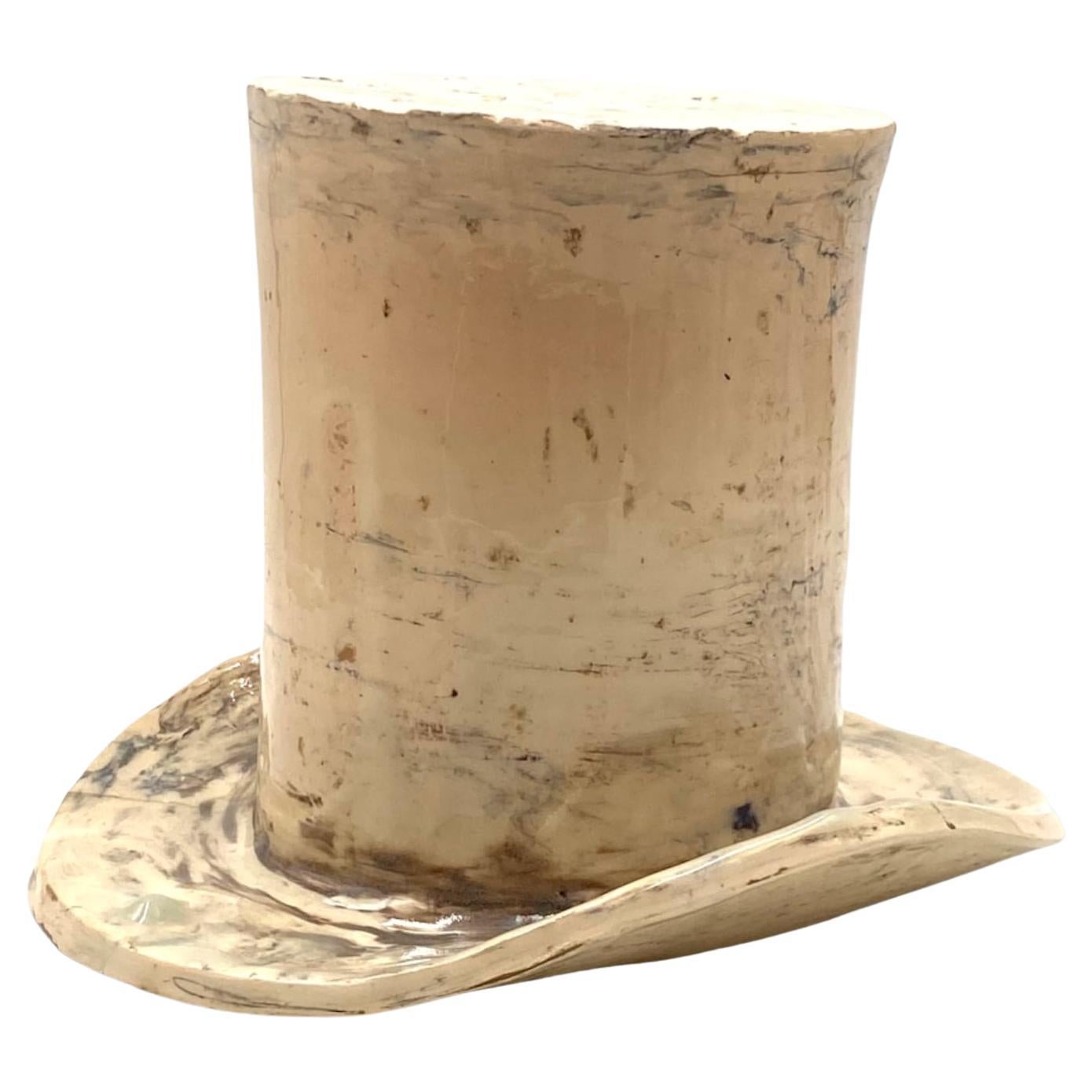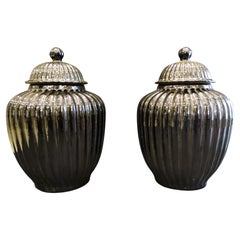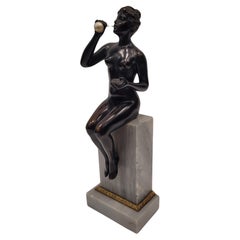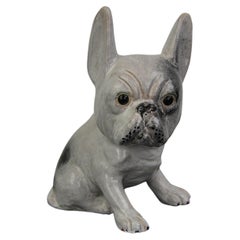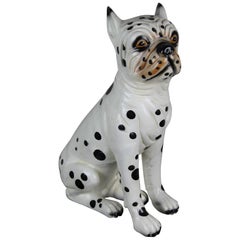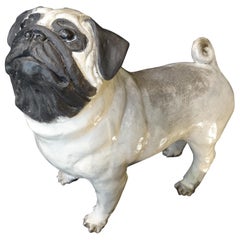
French Bulldog Black and White Ceramic Sarreguimes
View Similar Items
Want more images or videos?
Request additional images or videos from the seller
1 of 21
French Bulldog Black and White Ceramic Sarreguimes
About the Item
- Creator:Sarreguemines (Cabinetmaker)
- Dimensions:Height: 13.78 in (35 cm)Width: 14.97 in (38 cm)Depth: 6.7 in (17 cm)
- Style:Art Deco (Of the Period)
- Materials and Techniques:
- Place of Origin:
- Period:
- Date of Manufacture:circa 1940
- Condition:Wear consistent with age and use.
- Seller Location:Valladolid, ES
- Reference Number:1stDibs: LU2943320530352
About the Seller
4.7
Gold Seller
These expertly vetted sellers are highly rated and consistently exceed customer expectations.
Established in 1990
1stDibs seller since 2017
124 sales on 1stDibs
More From This SellerView All
- Pair of Black Ceramic Italian Vases, Bucaros, CenterpiecesBy Italian school XX ct.Located in Valladolid, ESAmazing pair of Italian black vases or Bucaros with lid ,in black ceramic , large in size and of great decorative strength in their shapes. The pieces are made by hand, so each piec...Category
Vintage 1970s Italian Mid-Century Modern Ceramics
MaterialsCeramic
$682 Sale Price / set78% Off - Atelier CERENNE RENE NEVEUX VALLAURIS 50s French Ceramic Abstract pair plateLocated in Valladolid, ESA bold and evocative abstract design decorates this mid century sculptural pair of plates from the Atelier Cerenne founded by Charles Rene Neveux in Vallauris, France in the commune ...Category
Vintage 1950s French Mid-Century Modern Ceramics
MaterialsCeramic
- German Black Bronze white marble Art Nouveau sculpture, woman blowing bublesBy Thomas GermanyLocated in Valladolid, ESVery beautiful and refined antique dark patinated solid bronze sculpture depicting a naked woman blowing bubbles It is of German origin and dates from around 1920. Unsigned. This b...Category
Vintage 1920s German Art Nouveau Figurative Sculptures
MaterialsMarble, Bronze
- Art Deco French Elephant Sculpture, Babbitt MaterialBy Irénée RochardLocated in Valladolid, ESGorgeous Art Deco elephant made of babbitt, original metal used at the time, beginning of the 20th century, following the style of Irénée Rochard (1906 - 1984). With round and facete...Category
Vintage 1950s French Art Deco Animal Sculptures
MaterialsMetal
- Unis France Magic Projector / Lantern, wood label FranceBy French House & GardenLocated in Valladolid, ESOutstanding and one of a kind folding magic lantern produced by the Unis France association in the first quarter of the 20th century. The function of this optical object is to projec...Category
Vintage 1920s French Art Nouveau Mobiles and Kinetic Sculptures
MaterialsCrystal, Iron
- 18th Century Italian Marble White Bust Sculpture of Child, CarraraBy Soft BaroqueLocated in Valladolid, ESStunning Italian sculpture in white Carrara Marble, bust of child,was part of an very important altarpiece in a private collection from a palace in Turin...Category
Antique 1790s Italian Baroque Figurative Sculptures
MaterialsCarrara Marble
You May Also Like
- Ceramic French Bulldog SculptureLocated in Antwerp, BEVintage ceramic French bulldog sculpture. A large Frenchie figurine made of ceramic in the colors white - grey with in the meantime a beautif...Category
Mid-20th Century European Animal Sculptures
MaterialsCeramic
- Hand-Painted Ceramic Dog Sculpture, Dalmatian Bulldog, 1960sLocated in Antwerp, BEHand-painted ceramic dog sculpture from the 1960s. This vintage ceramic Puppy Dog - Dane Dog Puppy - little Dalmatian Dog - Dalmatian Bulldog sculpture is so adorable. This Dog Fig...Category
Mid-20th Century European Mid-Century Modern Animal Sculptures
MaterialsCeramic
- Terracotta BulldogLocated in New York, NYOur favourite “English Gentleman” terracotta bulldog. This stately extra-large Victorian dog sits “at alert” with finely detailed dark muzzle, ruffl...Category
Antique 19th Century English Animal Sculptures
MaterialsTerracotta
$8,500 - French Art Deco Ceramic Black Lion, 1930sBy Studio Art DecoLocated in Saint-Amans-des-Cots, FRBlack lion, France, 1930s ceramic. This lion has been made in black, green, and red. This is the black one! Same period as Charles Lemanceau, François Pompon, Lejean, Jean & Jacques ...Category
Vintage 1930s French Art Deco Animal Sculptures
MaterialsCeramic
- Midcentury French Glazed Ceramic Black CatLocated in Stamford, CTA charming seated glazed ceramic black cat with yellow glass eyes and gilt bow around neck. What I find most appealing about this feline is the rather se...Category
Mid-20th Century French Mid-Century Modern Animal Sculptures
MaterialsCeramic
- Ceramic Red and Black, Style, Art DecoLocated in Ciudad Autónoma Buenos Aires, CCeramic Sign: Made in Austria Keramos 2051 19/M Wiener Keramos, later Keramos AG or Keramos KG , was a Viennese ceramics manufacturer that made a name for itself especially in the interwar period . In addition to their own designs, designs from the dissolved Wiener Werkstätte were also produced from 1932 onwards. In over 60 years of company history, around 3000 model designs have been produced by around 60 ceramists. Keramos also carried out commissions from the Wiener Werkstätte, such as vases by Dagobert Peche . History The origins of the Keramos company lie in two companies with the same name. The company Keramos – Invalid Society for Viennese Art Ceramics was founded at the end of 1919 on the initiative of the three ceramists Rudolf Wolf, Heinrich Wolf and Ludwig Rys, who had become invalids in World War I. Production started in September 1920. Art-ceramic lamps, figures, vases and boxes were produced. The company Keramos – Viennese art ceramics and porcelain manufactory was founded in 1920. Josef Hoffmann was a shareholder of Keramos for a long time, as was the sculptor Rudolf Podany, who was engaged from the start and created a large number of designs. From 1921 Anton Klieber was employed, who was also responsible for most of the models. Around 1924 both companies were merged and converted into an AG, commercial director became Otto Köller, the technical directors were the brothers Rudolf and Heinrich Wolf. "Some war invalid ceramists founded a workshop with the help of some artists, which was subsequently financed by the state and later enlarged with its participation and converted into a joint-stock company." The company's headquarters were in the Hofburg , Schwarze-Adler-Stiege, the factory in the 10th district of Vienna, Schleiergasse 17. Artistic collaborators at that time were Eduard Klablena , Otto Prutscher , Karl Perl , Karin Jarl-Sakellarios , IDA Schwetz- Lehmann and Grete Fucik-Fischmeister. On February 23, 1928, the triangular mark was entered in the trademark register. It was now also produced for the Wiener Werkstätte. Difficulties for the company arose from the Great Depression . Around 1932, 50 people were employed and a large number of models from Eduard Klabena and the dissolved Wiener Werkstätte were taken over. The works created by Keramos were labeled with their company brands until after 1941. From 1939 the economic situation of the company was better managed by taking over the production of ceramic winter welfare organization badges, the so-called WHW badges. Before 1941 the company is converted into a KG named Keramos, Wiener Kunstkeramik und Porzellanmanufaktur Brüder Wolf KG . Otto Köller was no longer active from this point on. After the end of World War II, Robert Obsieger recommended Robert Mathis as the new head of Keramos, who took over the management of the ceramics manufactory in 1945. In 1949 Mathis introduced a new company logo, which was used alongside the existing triangle mark, the so-called coat of arms mark. Anton Klieber and Rudolf Podany continued to work as ceramists, and new artists such as Josef Lorenzl and Stephan Dakon , both of whom had previously worked for Goldscheider , as well as Rudolf Chocholka, Karl Grössl and Ina Eisenbeisser were engaged. New models such as dancers, children's figures, animals and nudes were created, as well as the well-known wall masks, young people and poodles from the mid-1950s, which corresponded to the trend at the time. In addition, however, traditional designs such as Madonna statues and busts, saints and angels were still made. Utility ceramics such as crockery, vases, lamp bases, candle holders and flower pots also became an important branch of production, and cooperation with the German manufacturer Carstens at the beginning of the 1960s was just as lucrative. In the course of the 1960s, the sales markets for figurative ceramics became increasingly difficult. So until 1982, production was increasingly shifted to everyday ceramics, since ceramic figures were no longer modern due to changing tastes and the spirit of the times. Ultimately, the economic situation at Keramos became more and more difficult and Klaus Mathis, the son of Robert Mathis and then director, who succeeded his father at the helm of the company at the beginning of the 1970s, initiated the liquidation of the company at the end of 1982 . Staff The following artistic collaborators have worked for Keramos over the years: Hans Adametz , Franz Barwig the Elder , Franz Barwig the Younger , Andreas Beck, Hans Bolek, Angelo Bortolotti, Hertha Bucher , Rudolf Chocholka, Stephan Dakon , Ferdinand Doblinger, Eckstein, Franz Eggenberger , Ina Eisenbeisser, English, Stephan Erdös, Alois Feichtinger, Feyslitz, Hans Friedberger, Grete Fucik-Fischmeister, Kurt Goebel, Anton Grath, Karl Grössl, M. Günther, Otto Hafenrichter, Arnold Hartig , Friedrich Herkner, Trude Hillinger, Leopold Hohl, Hostasch, Karl Jamök, Karin Jarl-Sakellarios , Eduard Klablena, Klar, Anton Klieber, Maria Klinger, Josef Kostial, Josef Lorenzl , Wilhelm Otto Lugerth, Viktor Matula, Gusty Mundt-Amman, Novotny, Carl Perl, Rudolf Podany, Friedrich Pollak, Hugo Postl, Adolf Prischl, Otto Prutscher , Max Rieder , Elisabeth Rieger-Hofmann, Walter Ritter , Willibald Russ, Karl Sailer, Schönberg, Schwarz, Ida Schwetz-Lehmann , Sult, Robert Ullmann , Otto Weigand, IDA Weiss-Moricz, Rudolf Wolf. Exhibitions • Jubilee exhibition of the Wiener Kunstgewerbeverein, Austrian Museum , Vienna 1924. • Arts and Crafts Exhibition, Paris, 1925. • Exhibition of Austrian arts and crafts...Category
Vintage 1930s Austrian Art Deco Figurative Sculptures
MaterialsCeramic
